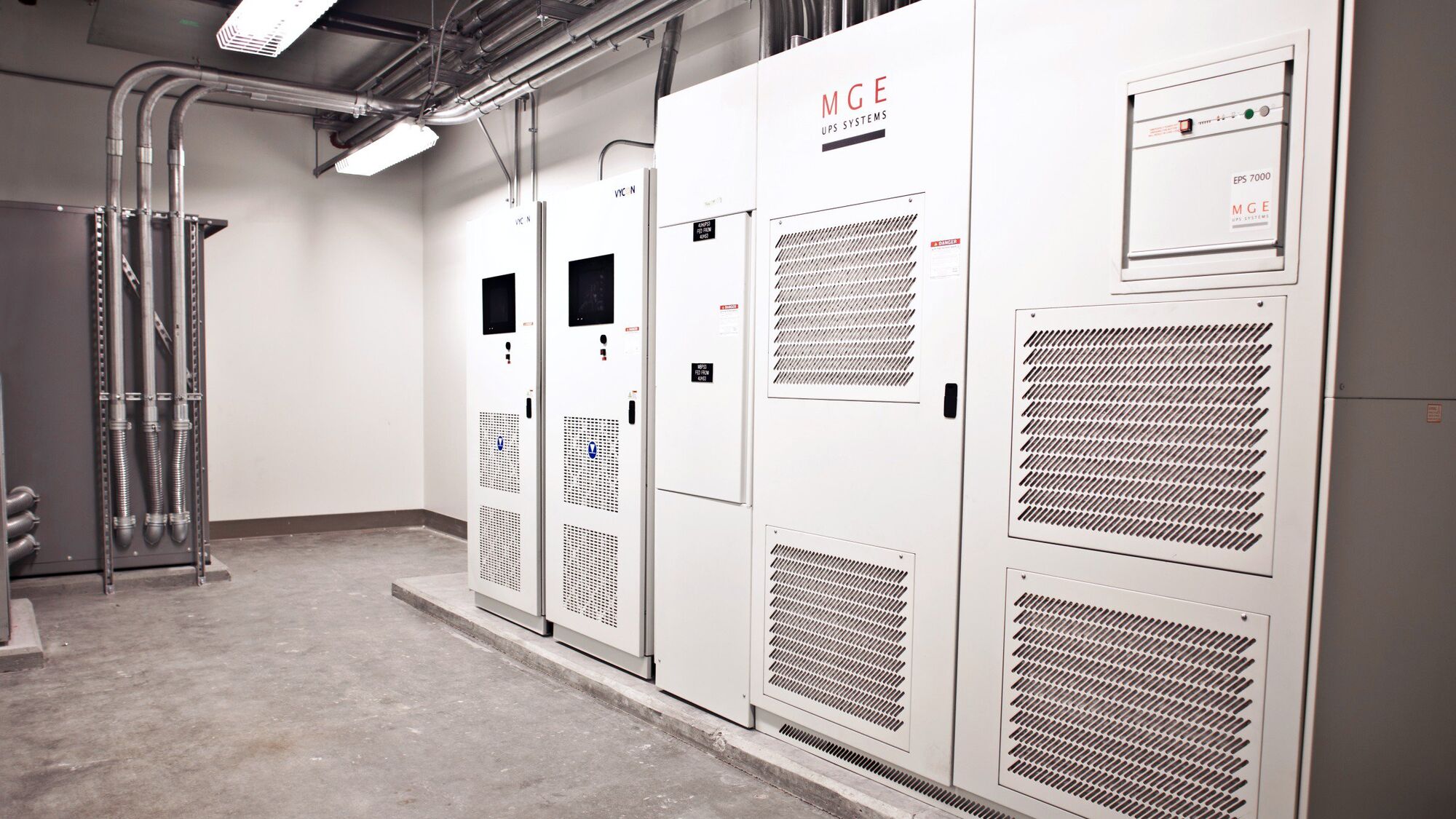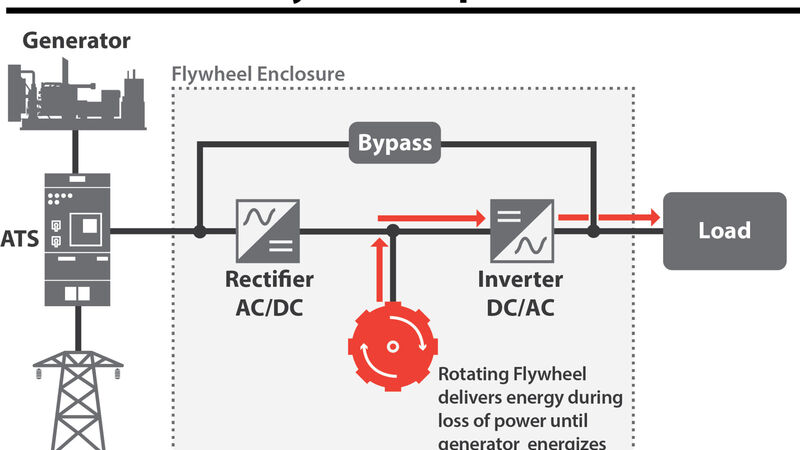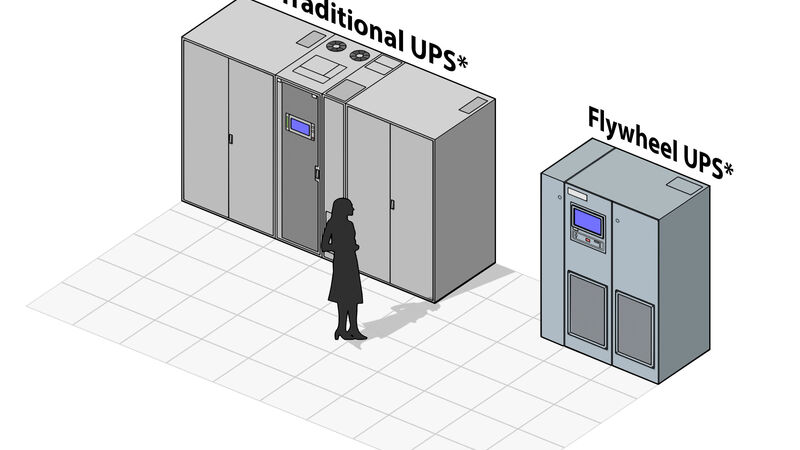
Flywheels are a Sustainable Uninterruptible Power Supply (UPS) Choice in Healthcare
With sustainability established as a priority of community well-being and operational dollars growing ever more precious, healthcare providers are chasing down the details of greener, more efficient approaches for their buildings. Uninterruptible power supplies (UPS) are universal to 24/7 healthcare facilities, and flywheel technology has emerged as a greener, more efficient UPS option for new construction and renovations.
In contrast to the relatively constant loads of data racks seen in data centers, the load profile for a healthcare facility varies greatly, subject to clinic types, occupancy, time of day, and medical equipment, a variety which flywheel UPS systems are expressly well-suited.
Meeting healthcare’s changing needs
While the UPS market in healthcare has been largely dominated by static battery systems, the rapid evolution of medical imaging equipment with characteristic load variations has exposed certain limitations in battery technology.
Magnetic resonance imaging, computed tomography, X-rays, and linear accelerators create short electrical power inrushes during operation. These pieces of medical imaging equipment operate at a consistent base load when not in use, but when an image is taken an inrush current, several times that of the base load, is drawn from the electrical distribution system. This inrush is a major reason why a power quality system — commonly the UPS — is placed ahead of the medical equipment.
The UPS takes the brunt of the load surge, leaving other electrical systems unaffected during a spike. This continual charging and discharging of load has an adverse effect on the life of UPS batteries, hastening the environmental impact presented by their hazardous chemical waste. Meanwhile, flywheels are fundamentally unaffected by continuous switching of medical equipment. The healthcare provider’s use of its medical imaging equipment simultaneously benefits. Any loss of power to this equipment represents large losses in both revenue and patient trust.
Flywheels can support the traditional role of data center continuality in the event of a power loss by being used in tandem with a traditional battery UPS system; by doing this the healthcare facility can have uninterruptible power during a power loss as well as gain the specific benefits described above.
How a flywheel works
A flywheel uses the stored rotational energy from a spinning mass to create an energy source. In the event of a power interruption, energy is extracted from the mass, providing sufficient emergency power prior to the standby power source kicking in.
A flywheel operates like a motor, absorbing energy from the electrical distribution system to rotate a shaft. Upon loss of power, the rotating shaft continues to spin due to inertia. The rotational inertia seamlessly transforms the flywheel from a motor into a generator, keeping the downstream electrical power distribution system energized long enough for an emergency generator to come online.


Choosing between battery and flywheel UPS
Key considerations for a UPS system utilizing flywheel technology include:
- Footprint: Depending on expected system runtime and overall capacity, flywheels generally have a reduced footprint compared to battery UPS systems with similar kVA ratings. The reduced footprint can lend itself to smaller UPS room requirements when space savings are a concern, particularly in renovations.
- Lifecycle and Maintenance: Across multiple system manufacturers, the typically expected lifecycle for a flywheel is 15-20 years. Flywheel manufacturers recommend yearly preventive maintenance of the flywheel’s vacuum pump and lubricating oil.
- Runtime: Flywheels typically operate in the seconds’ range while a battery UPS can operate for minutes at a time. Where longer runtimes are desired, flywheels can be coupled with battery strings to provide battery hardening and ride through system load spikes.
- Efficiency: Like a battery-type UPS, flywheels have variable efficiencies based on the percentage of system capacity being utilized. A flywheel becomes more efficient as more load is placed on it and generally ranges from 90-98 percent efficient.
- Environmental Impact: With a battery type UPS there is an inherent need for mechanical cooling and ventilation. These needs are almost completely eliminated with flywheel technology.
*This article originally appeared in the September/October 2017 issue of Medical Construction and Design.

Flywheels generally have a reduced footprint compared to battery UPS systems with similar kVA ratings.